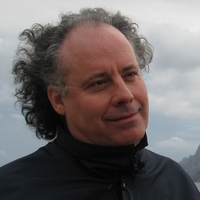
Pascual RIESCO-CHUECA
Ingeniero industrial (Sevilla, 1984), doctor (PhD Universidad de Yale, EE UU, 1988). Actualmente soy profesor titular en la Universidad de Sevilla, desde 2007; colaboro con el Centro de Estudios Paisaje y Territorio de Sevilla.
Tras nueve años fuera de España (Irlanda, EE UU, Países Bajos y Alemania), repartidos entre estudios y actividad profesional en la industria espacial y las patentes, regresé a Sevilla para dedicar otros nueve años a una consultora del campo del agua y medio ambiente. Desde 2003 estoy a tiempo completo en el departamento de Ingeniería Aeroespacial y Mecánica de Fluidos. Doy clases de Mecánica de Fluidos, una rama de la física, y de asignaturas nuevas, como Estética de la Ingeniería Civil, e Historia de la misma disciplina.
Cierta dispersión en los estudios no me ha impedido abrir un abanico más o menos continuo de temas a los que periódicamente regreso. Los enlaces entre campos de estudio no son evidentes, pero existe una tenaz armazón biográfica que los vertebra. La investigación en paisaje constituye un hilo director. Me han interesado los conceptos y categorías del lugar y del habitar; la distinción proximal / distal; la oralidad asociada a sitios y caminos; en el ámbito rural, las aportaciones de la etnografía y la toponimia a la historia del paisaje. En general, los vínculos entre la cultura, el lenguaje y el hecho espacial.
Mechanical Engineer (University of Seville ES, 1984) + PhD in Applied Physics (Yale University, USA, 1988). Associate Professor, University of Seville (2007-), Engineering School. Former Associate Researcher, Centre for Landscape and Territory (CEPT), Seville (2005-2014).
I spent nine years abroad (Ireland, USA, Netherlands and Germany), both in education and professional activity (Staff A1, European Space Agency, Noordwijk NL 1988-1989 / Substantive examiner, European Patent Office, Munich DE 1990-1994). Next I worked as Research Director, Centre for New Water Technology, Seville ES (1994-2003). From 2003 I became a full-time member of the Department of Aero-spatial Engineering and Fluid Mechanics (U. Seville). I am teaching Fluid Mechanics along with subjects in the field of Aesthetics (and History) of Civil Engineering.
Some dispersion and unsteadiness in my research areas has not deterred me from periodically revisiting and actively reconnecting the various thematic fields of my interest. In particular, I have concentrated on landscape and territorial studies, with some emphasis on the categories of place and dwelling; rural areas, landscape history, ethnographic spatiality and territorial self-expression by dwellers (toponymy). As a general backdrop, the links between cultural studies and spatial phenomena, or the poetry of space.
Tras nueve años fuera de España (Irlanda, EE UU, Países Bajos y Alemania), repartidos entre estudios y actividad profesional en la industria espacial y las patentes, regresé a Sevilla para dedicar otros nueve años a una consultora del campo del agua y medio ambiente. Desde 2003 estoy a tiempo completo en el departamento de Ingeniería Aeroespacial y Mecánica de Fluidos. Doy clases de Mecánica de Fluidos, una rama de la física, y de asignaturas nuevas, como Estética de la Ingeniería Civil, e Historia de la misma disciplina.
Cierta dispersión en los estudios no me ha impedido abrir un abanico más o menos continuo de temas a los que periódicamente regreso. Los enlaces entre campos de estudio no son evidentes, pero existe una tenaz armazón biográfica que los vertebra. La investigación en paisaje constituye un hilo director. Me han interesado los conceptos y categorías del lugar y del habitar; la distinción proximal / distal; la oralidad asociada a sitios y caminos; en el ámbito rural, las aportaciones de la etnografía y la toponimia a la historia del paisaje. En general, los vínculos entre la cultura, el lenguaje y el hecho espacial.
Mechanical Engineer (University of Seville ES, 1984) + PhD in Applied Physics (Yale University, USA, 1988). Associate Professor, University of Seville (2007-), Engineering School. Former Associate Researcher, Centre for Landscape and Territory (CEPT), Seville (2005-2014).
I spent nine years abroad (Ireland, USA, Netherlands and Germany), both in education and professional activity (Staff A1, European Space Agency, Noordwijk NL 1988-1989 / Substantive examiner, European Patent Office, Munich DE 1990-1994). Next I worked as Research Director, Centre for New Water Technology, Seville ES (1994-2003). From 2003 I became a full-time member of the Department of Aero-spatial Engineering and Fluid Mechanics (U. Seville). I am teaching Fluid Mechanics along with subjects in the field of Aesthetics (and History) of Civil Engineering.
Some dispersion and unsteadiness in my research areas has not deterred me from periodically revisiting and actively reconnecting the various thematic fields of my interest. In particular, I have concentrated on landscape and territorial studies, with some emphasis on the categories of place and dwelling; rural areas, landscape history, ethnographic spatiality and territorial self-expression by dwellers (toponymy). As a general backdrop, the links between cultural studies and spatial phenomena, or the poetry of space.
less
Related Authors
David Seamon
Kansas State University
Javier Ruano-García
University of Salamanca
Michael Shanks
Stanford University
Mikail F Lumentut
National Taiwan University
David Peterson
Universidad de Burgos
Bert Groenewoudt
Cultural Heritage Agency of the Netherlands
Viacheslav Kuleshov
Stockholm University
Kiril Marinow
The University of Lodz
Роман Гайдамашко
Institute for Linguistic Studies, Russian Academy of Sciences

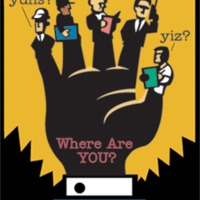
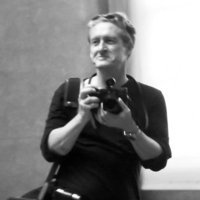
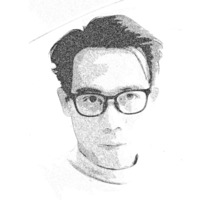

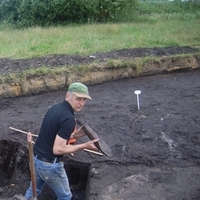



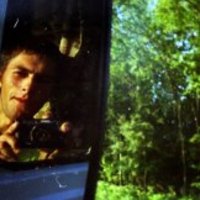
Uploads
Papers by Pascual RIESCO-CHUECA
PALABRAS-CLAVE: antroponimia, Edad Media, lexicología, etimología, provincia de Zamora
ABSTRACT: In the geographical distribution of Spanish surnames, some appear to display a clear designation of origin, as they are overwhelmingly concentrated in one province, although they may have spread, to a lesser extent, to neighboring provinces, or dispersed to large emigration centers. There are surnames with an unmistakable Zamoran flavor, which give a nostalgic knock to those who come across them in other provinces. They are usually rare, even close to extinction; they may contain features of the old Leonese dialect. Let us review some of them.
KEYWORDS: anthroponymy, Middle Ages, lexicology, etymology, province of Zamora
At the end of the 19th century, going to extremes and transgressing limits became the norm for an artistic career. Inverted schedules, alcohol, drugs and dissipation will nurture a period loaded with vitality and disorder. The underworld and the night hours provided both a habitat, a thematic provider, and a creative mold. Joining this race to debauchery entails risks for painting: incurring melodramatic excesses or embarking on the empty promotional scandal. But new structuring elements, born from society itself, will impose containment, through the agency of market demand and expert criticism, to a production all too tempted by sensationalism.
Una mirada crítica a las imágenes escudriña significados traídos de distintos frentes: la constelación social suscitadora del acto pictórico; las relaciones de dependencia o autoridad entre artista y modelo; las ideas y actitudes coetáneas, con sus automatismos y comodines; la presión del mercado; la competencia y emulación entre artistas, ansiosos de ocupar posiciones académicas y sociales o conquistar estilos. La variable de género complica aún más este ramificado árbol de indicios; y más, si, como se señala en la introducción, el arco temporal elegido viene a coincidir con una etapa en que “la mujer salta al otro lado del espejo”, para medir por sí misma los abismos y horizontes de la producción literaria o pictórica.
PALABRAS CLAVE: traducción poética; Derek Walcott; intraducibilidad; paráfrasis.
PARAPHRASIS, PRUNING AND SCAFFOLDING IN POETIC TRANSLATION: THE BOUNTY (DEREK WALCOTT) IN SPANISH
A poem is a precarious artifact, dependent upon the automatisms of the language in which it was created. In the light of a book by Walcott, translated into Spanish by Talens and Forés, two options are discerned, both aiming at reactivating the mechanisms of the original text in the target language. One way resorts to pruning, hyperbaton and free lexical selection, trying to prevent the translated text from stretching its verses beyond the original meter. Another option tries to preserve the content and nuances of the source text: this requires the inclusion of subtle glosses, paraphrasing and expanding on points where the reading comprehension can be lost.
KEYWORDS: poetic translation; Derek Walcott; untranslatability; paraphrase.
PALABRAS-CLAVE: Carbajales de Alba, revuelta comunera, historia local, conflictividad.
ABSTRACT: The small history of a town in Zamora around 1520 unveils frictions and hardships of a neighbourhood burdened by the war effort. An attempt has been made to give expression and volume to the various characters that struggle in these obscure local conflicts, minor figures embodying big history abstractions.
KEYWORDS: Carbajales (Zamora), Revolt of the Comuneros, local history, conflictivity.
PALABRAS-CLAVE: paisaje de frontera, maltrato de comunales, montes, trashumancia, Toro (Zamora).
ABSTRACT: In the southwestern corner of the old province of Toro, two municipal terms engage in a fierce competition for natural resources involving different agents: The Bishop of Zamora, the Mesta, a fragmented lordship in the hands of knights from the council of Toro, and the settlers. The local is interwoven with the global, spawning an unrelenting dynamics of natural heritage erosion. Due to negligence or lack of information, the Royal Audience of Valladolid is unable to negotiate sustainable management solutions, issuing nonchalant sentences that chronify the conflicts.
KEYWORDS: frontier landscape, tragedy of the commons, woodland, transhumance, Toro (Zamora).
del uso y costumbre, que aspira a regular un campo de intensa conflictividad: nada menos que la construcción, explotación y reforma de aceñas, artefactos estratégicos que comparten un mismo recurso azaroso y fatal, el régimen hidrológico de un río. Ambiciosa misión, que habrá de enfrentarse a denuncias de poderosos y choques jurisdiccionales. En 1499 es una mujer, María Ordóñez de Villaquirán, quien pugna por colocarse al frente de los jueces de ribera.
palabras clave: esoterismo, modernidad, pintura, abstracción y creatividad, doble vínculo.
Visual, seer or visionary?: occultism and the visual arts in the XIX century
ABSTRACT: Occultist visual arts are defiled by tampering and propaganda, but also heightened by daring explorations. Spiritism and theosophy coalesce with the creative constellations preluding the birth of modernism. A relationship with science marked by a childish dependency toward the new discoveries, experienced as a realm of wonders and a rich playfield, gives rise to a double bind: boldness and heterodoxy, but gullibility and obedience; boisterous theatricality, but priestly self-absorption. Many of these features are shared by the modern movement at large. Esoteric-inspired visual arts, fellow-travellers of a new sensitivity, will sponsor some of the forays into the unknown that nurtured modernity, joining with many other driving agents in the outburst that will radically change, at the turn of the century, the face of art.
KEYWORDS: Esotericism, modernity, painting, abstraction and creativity, double bind.
An attempt is made at locating place and its counter-figure, non-place, within the framework of landscape theory. To do so, we compare the attributes that have been applied to the notion of place with two dimensions (attachment and interaction), used in our landscape classification matrix. This matrix, freely inspired by the grid-group cultural theory, separates four landscape types. Our main object is to clarify the status of place and non-place within the landscape matrix. The ensuing discussion shows that both the classification and the landscape concept itself are exposed to hyper-modernization, a powerful destabilizing vector that melts the boundaries between types, creates disjunction between landscape features, and problematizes the concept of landscape character.
Verbal compound place names display peculiar features owing to their radical linguistic economy. They operate as an abridged narrative, either describing physical data, or advising about risks and potentials. Intensely context-dependent, they are immersed in the cultural fabric of their surroundings, and may echo proverbs and locutions. As a result, they are atractive to the lexicographer, because they expand the inventory of verbal composition, providing uncharted variants. In this text, an intensive survey is carried out in the province of Zamora, drawing on various written and cartographic sources.
PALABRAS-CLAVE: composición verbal, toponimia de Zamora, cultura campesina, paremiología, fraseología.
KEYWORDS: verbal composition, toponymy of Zamora (Spain), rural culture, paremiology, phraseology.
PALABRAS-CLAVE: antroponimia, Edad Media, lexicología, etimología, provincia de Zamora
ABSTRACT: In the geographical distribution of Spanish surnames, some appear to display a clear designation of origin, as they are overwhelmingly concentrated in one province, although they may have spread, to a lesser extent, to neighboring provinces, or dispersed to large emigration centers. There are surnames with an unmistakable Zamoran flavor, which give a nostalgic knock to those who come across them in other provinces. They are usually rare, even close to extinction; they may contain features of the old Leonese dialect. Let us review some of them.
KEYWORDS: anthroponymy, Middle Ages, lexicology, etymology, province of Zamora
At the end of the 19th century, going to extremes and transgressing limits became the norm for an artistic career. Inverted schedules, alcohol, drugs and dissipation will nurture a period loaded with vitality and disorder. The underworld and the night hours provided both a habitat, a thematic provider, and a creative mold. Joining this race to debauchery entails risks for painting: incurring melodramatic excesses or embarking on the empty promotional scandal. But new structuring elements, born from society itself, will impose containment, through the agency of market demand and expert criticism, to a production all too tempted by sensationalism.
Una mirada crítica a las imágenes escudriña significados traídos de distintos frentes: la constelación social suscitadora del acto pictórico; las relaciones de dependencia o autoridad entre artista y modelo; las ideas y actitudes coetáneas, con sus automatismos y comodines; la presión del mercado; la competencia y emulación entre artistas, ansiosos de ocupar posiciones académicas y sociales o conquistar estilos. La variable de género complica aún más este ramificado árbol de indicios; y más, si, como se señala en la introducción, el arco temporal elegido viene a coincidir con una etapa en que “la mujer salta al otro lado del espejo”, para medir por sí misma los abismos y horizontes de la producción literaria o pictórica.
PALABRAS CLAVE: traducción poética; Derek Walcott; intraducibilidad; paráfrasis.
PARAPHRASIS, PRUNING AND SCAFFOLDING IN POETIC TRANSLATION: THE BOUNTY (DEREK WALCOTT) IN SPANISH
A poem is a precarious artifact, dependent upon the automatisms of the language in which it was created. In the light of a book by Walcott, translated into Spanish by Talens and Forés, two options are discerned, both aiming at reactivating the mechanisms of the original text in the target language. One way resorts to pruning, hyperbaton and free lexical selection, trying to prevent the translated text from stretching its verses beyond the original meter. Another option tries to preserve the content and nuances of the source text: this requires the inclusion of subtle glosses, paraphrasing and expanding on points where the reading comprehension can be lost.
KEYWORDS: poetic translation; Derek Walcott; untranslatability; paraphrase.
PALABRAS-CLAVE: Carbajales de Alba, revuelta comunera, historia local, conflictividad.
ABSTRACT: The small history of a town in Zamora around 1520 unveils frictions and hardships of a neighbourhood burdened by the war effort. An attempt has been made to give expression and volume to the various characters that struggle in these obscure local conflicts, minor figures embodying big history abstractions.
KEYWORDS: Carbajales (Zamora), Revolt of the Comuneros, local history, conflictivity.
PALABRAS-CLAVE: paisaje de frontera, maltrato de comunales, montes, trashumancia, Toro (Zamora).
ABSTRACT: In the southwestern corner of the old province of Toro, two municipal terms engage in a fierce competition for natural resources involving different agents: The Bishop of Zamora, the Mesta, a fragmented lordship in the hands of knights from the council of Toro, and the settlers. The local is interwoven with the global, spawning an unrelenting dynamics of natural heritage erosion. Due to negligence or lack of information, the Royal Audience of Valladolid is unable to negotiate sustainable management solutions, issuing nonchalant sentences that chronify the conflicts.
KEYWORDS: frontier landscape, tragedy of the commons, woodland, transhumance, Toro (Zamora).
del uso y costumbre, que aspira a regular un campo de intensa conflictividad: nada menos que la construcción, explotación y reforma de aceñas, artefactos estratégicos que comparten un mismo recurso azaroso y fatal, el régimen hidrológico de un río. Ambiciosa misión, que habrá de enfrentarse a denuncias de poderosos y choques jurisdiccionales. En 1499 es una mujer, María Ordóñez de Villaquirán, quien pugna por colocarse al frente de los jueces de ribera.
palabras clave: esoterismo, modernidad, pintura, abstracción y creatividad, doble vínculo.
Visual, seer or visionary?: occultism and the visual arts in the XIX century
ABSTRACT: Occultist visual arts are defiled by tampering and propaganda, but also heightened by daring explorations. Spiritism and theosophy coalesce with the creative constellations preluding the birth of modernism. A relationship with science marked by a childish dependency toward the new discoveries, experienced as a realm of wonders and a rich playfield, gives rise to a double bind: boldness and heterodoxy, but gullibility and obedience; boisterous theatricality, but priestly self-absorption. Many of these features are shared by the modern movement at large. Esoteric-inspired visual arts, fellow-travellers of a new sensitivity, will sponsor some of the forays into the unknown that nurtured modernity, joining with many other driving agents in the outburst that will radically change, at the turn of the century, the face of art.
KEYWORDS: Esotericism, modernity, painting, abstraction and creativity, double bind.
An attempt is made at locating place and its counter-figure, non-place, within the framework of landscape theory. To do so, we compare the attributes that have been applied to the notion of place with two dimensions (attachment and interaction), used in our landscape classification matrix. This matrix, freely inspired by the grid-group cultural theory, separates four landscape types. Our main object is to clarify the status of place and non-place within the landscape matrix. The ensuing discussion shows that both the classification and the landscape concept itself are exposed to hyper-modernization, a powerful destabilizing vector that melts the boundaries between types, creates disjunction between landscape features, and problematizes the concept of landscape character.
Verbal compound place names display peculiar features owing to their radical linguistic economy. They operate as an abridged narrative, either describing physical data, or advising about risks and potentials. Intensely context-dependent, they are immersed in the cultural fabric of their surroundings, and may echo proverbs and locutions. As a result, they are atractive to the lexicographer, because they expand the inventory of verbal composition, providing uncharted variants. In this text, an intensive survey is carried out in the province of Zamora, drawing on various written and cartographic sources.
PALABRAS-CLAVE: composición verbal, toponimia de Zamora, cultura campesina, paremiología, fraseología.
KEYWORDS: verbal composition, toponymy of Zamora (Spain), rural culture, paremiology, phraseology.